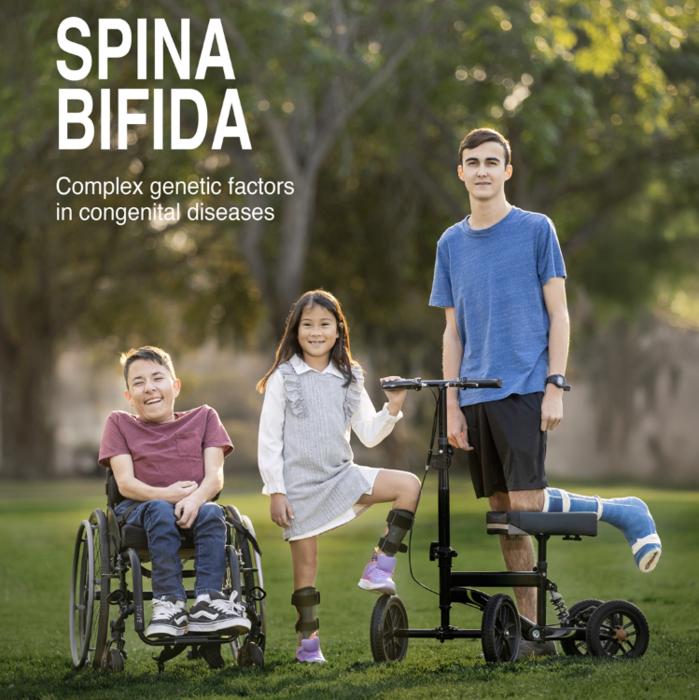A groundbreaking advance in the understanding of spina bifida has emerged from a significant collaboration between scientists at Rady Children’s Institute for Genomic Medicine and the University of California, San Diego. This research not only sheds light on the biological mechanisms behind the condition but also opens avenues toward potential treatments and preventive strategies. Spina bifida, particularly its most severe form known as meningomyelocele, affects thousands of newborns each year and poses various lifelong challenges related to mobility and bladder function. Historically, the complexities of its etiology have hindered both diagnosis and intervention, but this recent study presents a promising shift in our understanding.
The implications of spina bifida are dire, as it is a condition that manifests when the spinal column does not close completely during early embryonic development. Traditionally, the cause of spina bifida has been murky, with known environmental risk factors failing to account for numerous cases. The new research, published in the reputable journal Nature, introduces the idea that novel de novo mutations—genetic alterations not found in either parent—are significant contributors to this birth defect. The identification of these mutations signifies a pivotal step forward in unraveling the genetic underpinnings of the condition.
Dr. Joseph Gleeson, the senior author of the study and an esteemed professor at both Rady Children’s and UC San Diego, highlighted the importance of these discoveries. He stated that the study marks a crucial juncture in understanding spina bifida, emphasizing the announced findings regarding the embryonic processes that lead to its occurrence. The research draws a clear link between genetic mutations and the anatomy of neural tube defects, demonstrating for the first time that specific genetic variations can disrupt normal spinal cord formation.
A multi-faceted approach was required to explore the intricacies of spina bifida, leading the research team to establish the Spina Bifida Sequencing Consortium, which is supported by the National Institutes of Health (NIH). This consortium facilitated the collection of DNA samples from a diverse population, allowing researchers to analyze both familial and de novo mutations effectively. The collaborative effort emphasizes the necessity of a global approach to tackle such complex medical challenges, pooling resources and knowledge from a multitude of institutions.
Results from the study reveal that nearly a quarter of individuals afflicted with spina bifida carry genetic mutations that significantly heighten their risk for the condition. These mutations are asserted to alter how embryonic cells communicate and adhere to one another during critical periods of spinal development. Traditional assumptions that environmental factors played the predominant role are thus challenged, suggesting a paradigm shift toward understanding genetic consequences as foundational to spina bifida occurrence.
The discoveries have consequential implications for early diagnostic practices. Dr. Yoo-Jin Ha, the first author of the paper and affiliated with both UC San Diego and Yonsei University, noted that recognizing these genetic risk factors could support the development of sophisticated screening methodologies. Such innovations in diagnostic tools could change the landscape of prenatal care, allowing for earlier identification of risks and more personalized management plans for expecting families.
Moreover, this research not only foreshadows improvements in diagnosis but also hints at groundbreaking therapeutic modalities. The potential for harnessing stem cell models to explore the mechanics behind these genetic anomalies heralds an era of targeted interventions. Concepts such as gene therapy and drug development could take root as researchers delve deeper into the biological pathways revealed through this data.
Folic acid supplementation has long been recognized as a preventative measure for spina bifida, significantly lowering the incidence of this condition in populations with adequate prenatal care. This study offers a complementary strategy that could, in the long run, further enhance preventive approaches. As Dr. Gleeson points out, the ultimate goal is to reach a stage where medical interventions occur proactively, before spina bifida manifests, thereby mitigating its sometimes devastating ramifications.
Considering the exhaustive nature of this research, future explorations will incorporate advanced DNA mutation detection techniques, enhancing the resolution at which specific genetic contributors to spina bifida can be identified. The collaboration between Rady Children’s Institute and various institutions, such as the Spina Bifida Association, reinforces the idea that unified efforts in research can potentially yield substantial breakthroughs in clinical settings.
The findings have been made possible by significant funding from NIH and collaborative efforts spanning over 30 institutions. This international network of academics and medical professionals symbolizes the unified response required to confront congenital disorders, which, while individually rare, collectively represent a critical area in healthcare that deserves ongoing attention.
In conclusion, this pioneering work not only enriches the scientific community’s knowledge regarding spina bifida but also raises hopes for those affected by the condition. As the researchers continue their pursuit of understanding, the collective hope lies in their ability to translate these findings into practical applications, ultimately improving outcomes for countless families around the world.
—
Subject of Research: Genetic factors contributing to spina bifida
Article Title: The contribution of de novo coding mutations to meningomyelocele
News Publication Date: April 1, 2025
Web References: https://doi.org/10.1038/s41586-025-08676-x
References: Nature (2025)
Image Credits: Rady Children’s Institute for Genomic Medicine
Keywords: Spina bifida, Genetic medicine, Neural tube defects, Birth defects, Prenatal diagnosis, Therapeutic intervention




